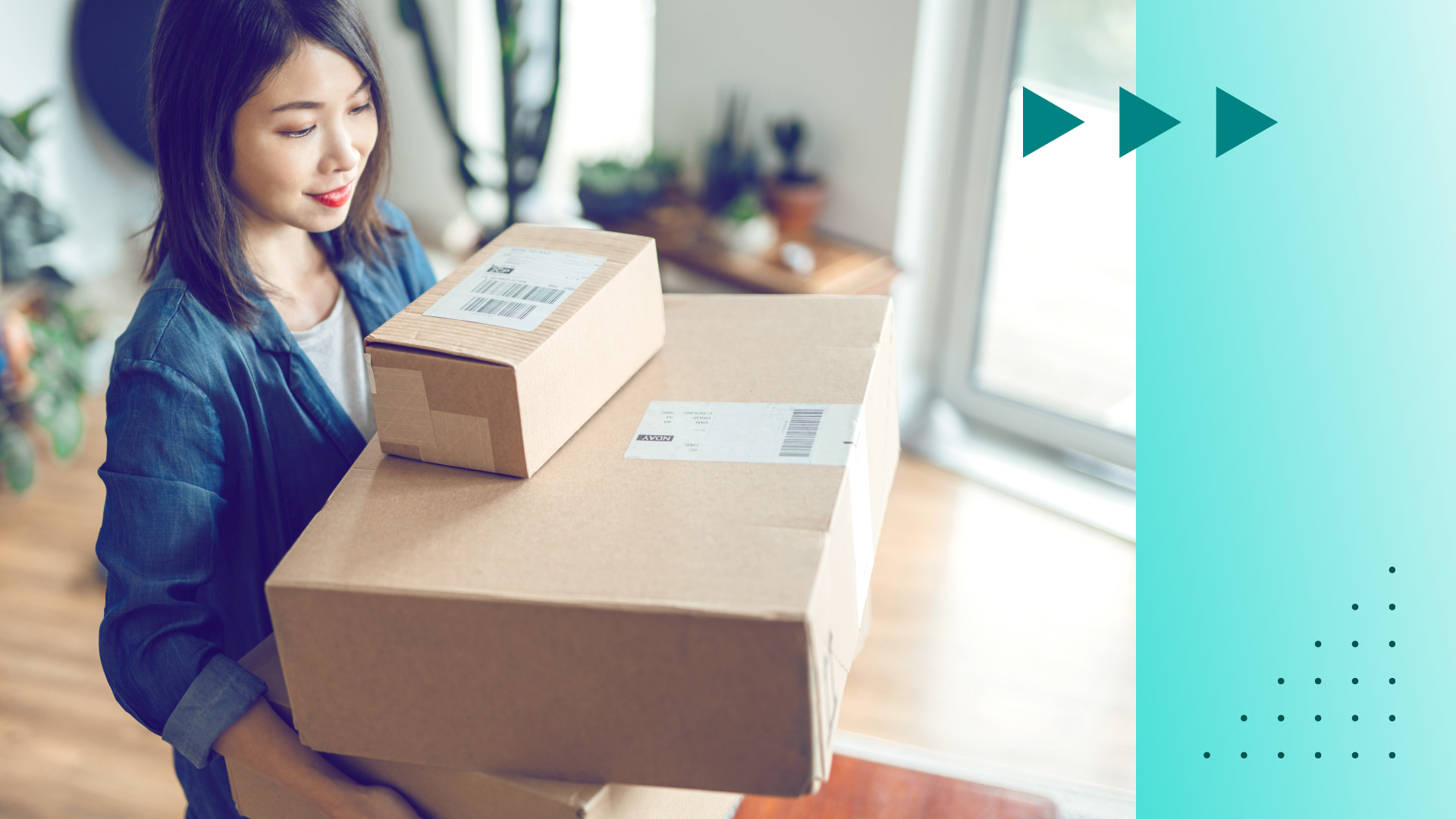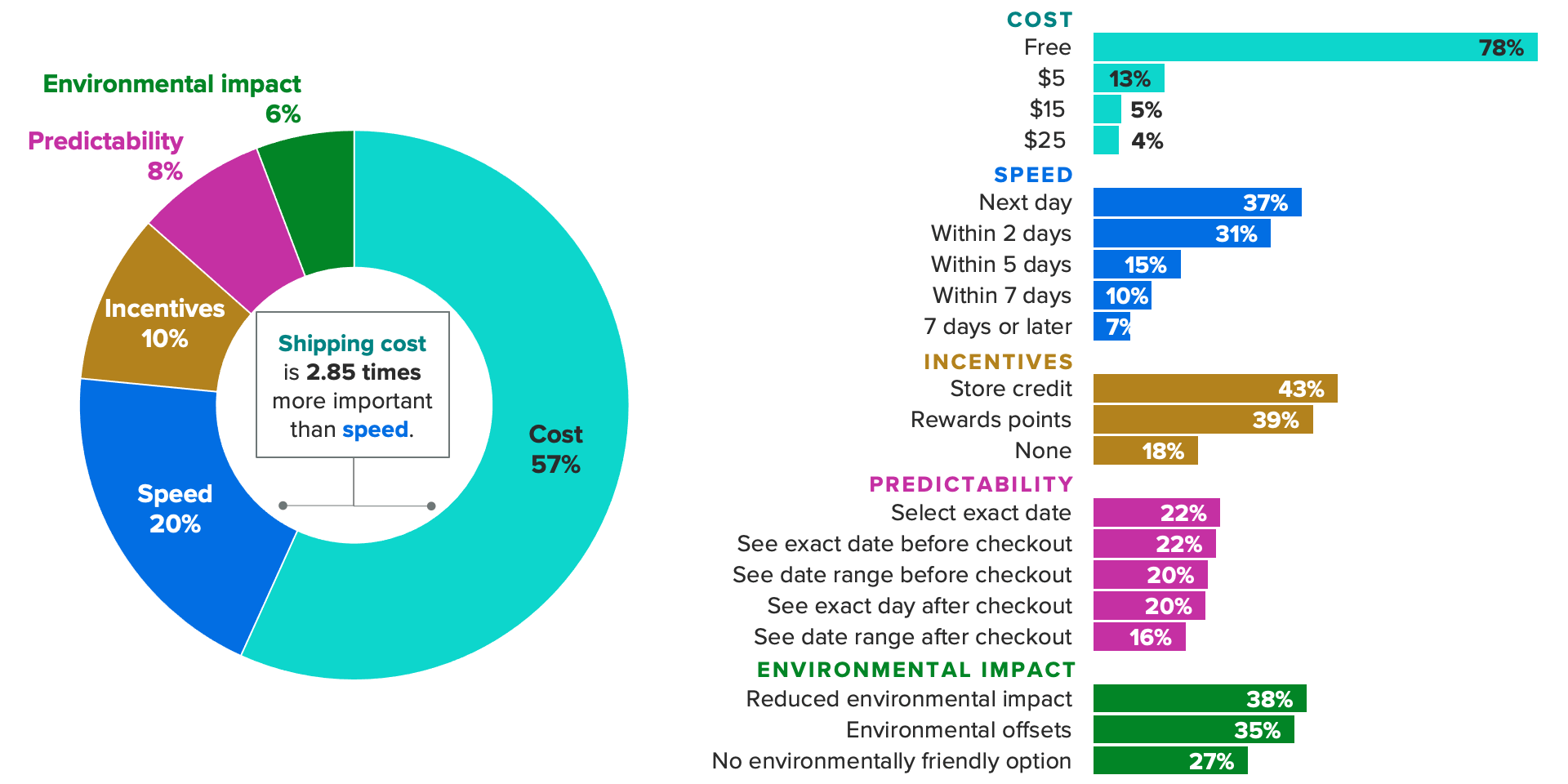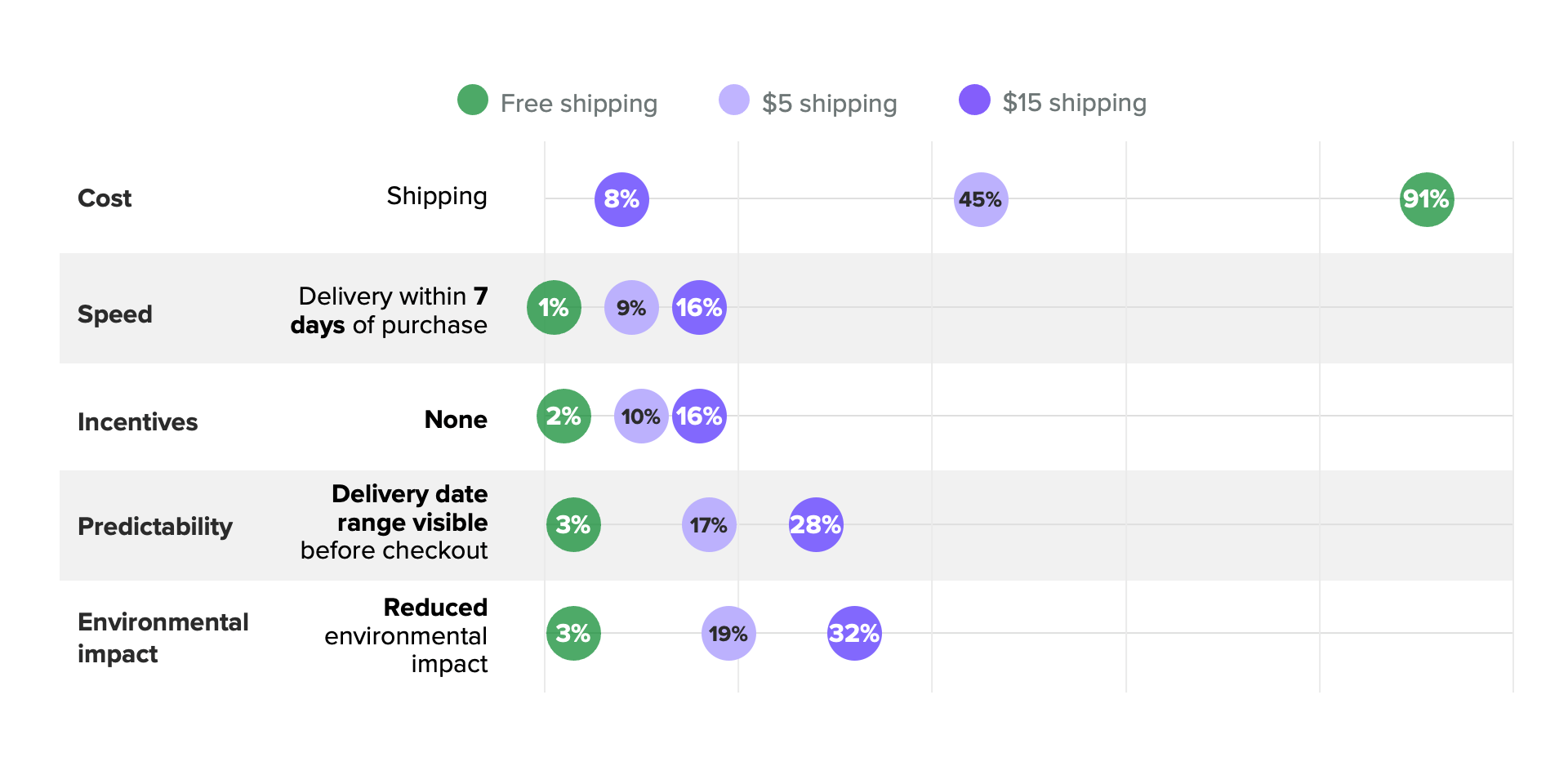Cost Is Consumers’ Most Important Shipping Consideration — Not Speed

Key Takeaways
Shipping cost is 2.85 times more important than speed in consumers’ e-commerce delivery decisions.
Retail and e-commerce brands are optimizing their operations for speed, but consumers’ overwhelming preference for free shipping means delivery times can be slowed down to cut costs.
Charging for shipping means shoppers pay more attention to secondary shipping attributes, which are also likely to be more budget-friendly for brands.
For more exclusive data on consumers’ shipping preferences and expectations, download Morning Consult’s latest State of Retail & E-Commerce report.
Final mile delivery is expensive for online brands, but consumers don’t want to pick up the tab either. As retailers experiment with ways to control e-commerce costs without damaging the customer experience, shipping decisions are getting more complex than just evaluating speed and cost.
Some retailers, like Amazon, offer small incentives in the form of store credit for customers who choose slower shipping speeds, brands like Saks Off Fifth have made investments to improve the accuracy of delivery dates displayed on product pages, and others allow shoppers some degree of control in selecting their preferred delivery day. Some nudge shoppers toward slower speeds with eco-centric messaging.
People obviously prefer free shipping to paid shipping, but what's the impact of all these options, and what trade-offs will consumers make if free isn’t an option?
To answer this question, Morning Consult created a conjoint study to examine consumers’ shipping decisions. Conjoint studies comprise a series of forced trade-offs, which help us understand the features people care about most when evaluating a product or service and allow us to evaluate the trade-offs people are willing to make. (Our analysis excluded products requiring special handling.)
Free shipping has universal appeal, but brands tend to overestimate consumers’ speed preferences
It should not surprise anyone that cost is the most important attribute in a shipping decision, followed by speed. The overall feature importance of shipping cost is 57%, which means more than half of a shopper’s in-cart decision is based on shipping cost, while just 20% of the decision is determined by shipping speed.
Incentives, predictability and environmental impact do matter, but not nearly as much as cost and speed. This conjoint analysis included a store incentive in the form of either nominal store credit or rewards points, a range of delivery timeline variables, and environmental benefits (or lack thereof). These attributes are becoming more common in e-commerce carts, but are not differentiators for most shoppers.

It’s evident that the vast majority of shoppers will choose free shipping regardless of other attributes offered. Examining the feature preference share (the above bar chart), or the probability that one level of a feature will be selected over another, shows that 13% of shoppers are likely to select the $5 shipping option, but after that, if you charge $15, you might as well charge $25, as a small and similar share of shoppers are likely to select those prices.
This is where the conjoint analysis becomes extremely valuable. If we control for shipping cost, we can see how that shifts the importance of other attributes when comparing free and more expensive options.
- Shoppers are likely to choose next-day and two-day shipping, but we
know that people are unlikely to pay for speed. If maintaining free delivery requires pumping the brakes on speed, that’s a very reasonable trade-off. - Incentives can soften the blow of paying more or waiting longer, but they’re not a game changer.
- When it comes to offering more predictability, there’s little differentiation. Showing delivery timelines before checkout, ideally on the product detail page, is sufficient here.
- Similarly, environmental impact is not a strong differentiator, as shoppers will generally prefer options with some type of environmental message, but it’s not enough to alter their decision.
Secondary attributes become much more important when shipping fees are introduced
Our conjoint analysis produced 900 possible bundles, three of which are displayed below, revealing how the importance of certain features shifts in different scenarios. The chart shows the same shipping bundle at three different price points.
Note how charging for shipping increases the importance of other features. For example, charging $15 for shipping moves the probability that a shipping option will be selected based on its promise to reduce environmental impact from 3% to 32%. If free shipping isn’t the right choice for your brand, these other options can make paid shipping more palatable for consumers.

The feature importance metrics above reflect how much each level of each attribute affects the probability that a bundle will be selected. As these variables change across bundles, so does their importance when taken into consideration with all of the available features.
Offering free shipping is ideal for consumers and competitive for retailers, so if cost savings can instead be found in reducing speed, by all means, take the opportunity — assuming you can still deliver within a week or so. Alternatively, for those who do need to charge for delivery, pulling on those secondary levers can alleviate some of consumers’ pain.